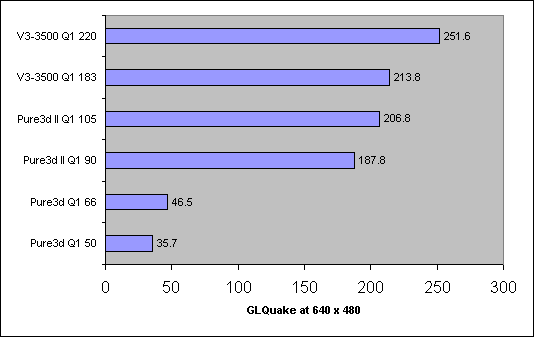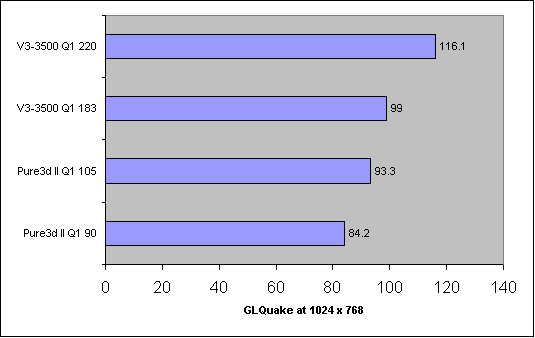
Overclocking- Voodoo Graphics vs. Voodoo II vs. Voodoo 3
After running a series of benchmarks to determine relative performance across the range of Voodoo cards the question comes up- How about overclocking the cards for more performance? In this study we push a few of the popular cards and see how far they go and how much performance is gained.
Cards tested and notes-
Canopus Pure3d (50 mhz default) 60 mhz ram
You got what you paid for- This Canopus card along with 2 MB extra ram had higher quality 60 mhz ram as well. Using this line (SET SST_GRXCLK=60) in the autoexec.bat file to set the clock speed I was able to push the card to 66 mhz before artifacts started appearing.
Canopus Pure3d II SLI (90 mhz default) 100 mhz ram
You got what you paid for II- This pair of Canopus cards had higher quality ram as well, 100 mhz Silicon Magic. While using a popular overclocking program the card attained a maximum overclock of 105 mhz with no problems. I would have gone higher but it would have entailed registry editing and I already had the information required.
3dfx V3-3500 (183 mhz default) 5.5 ns ram
Card was an insane overclocker with a peak clockspeed of 220 mhz before I ceased operations.

With a simple game engine with plenty of CPU power on tap and low screen resolution, the cards are being feed info as fast as they can take it. It should be noted that the SLI rig is belting out framerates *five times faster* then its predecessor.

At 1024 x 768 the cards are still belting out the frame rates even at default speeds. It's no wonder that the Voodoo II SLI was *the* rig to own if you wanted the fastest Quake box back in 1998. It even gives the two year newer V3-3500 a run for the money while running at half the speed! Of course in all fairness it should be noted that back in 1998 a SLI setup would set you back $600 and still required a 2d card while the V3-3500 was $249 and only occupied a single slot.
Still back in 1998 it was the best and fastest available ;-)